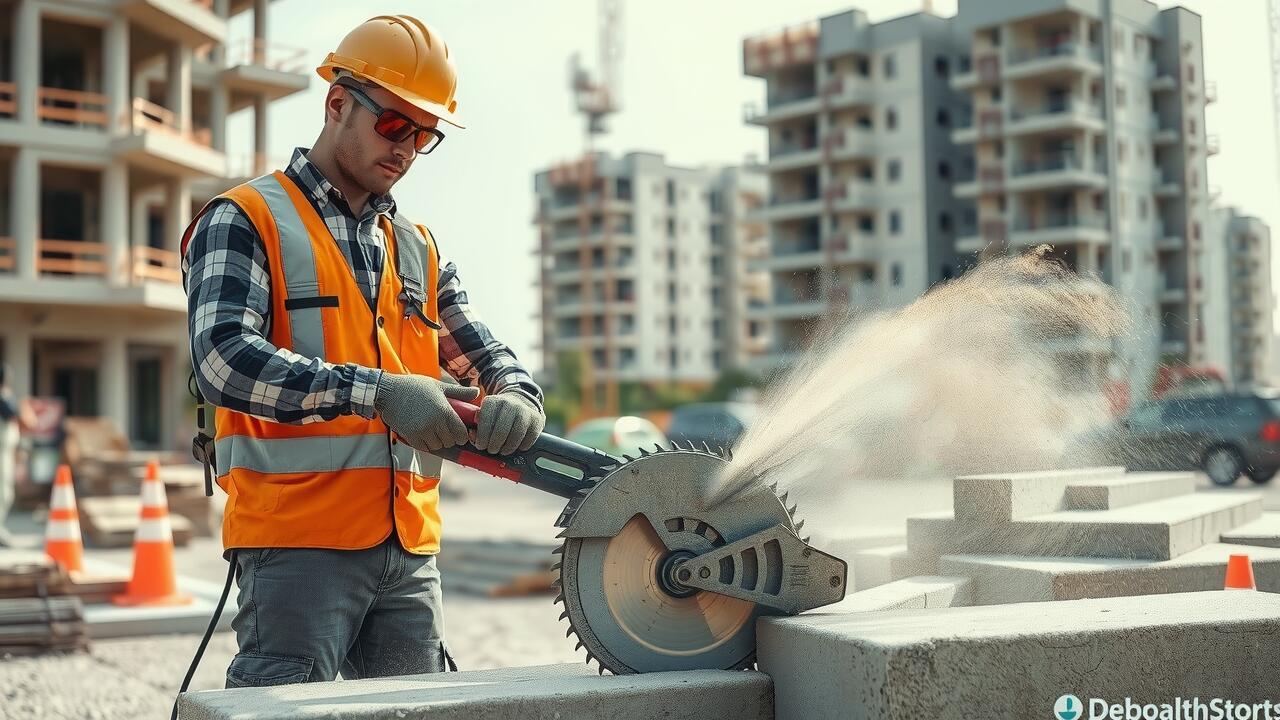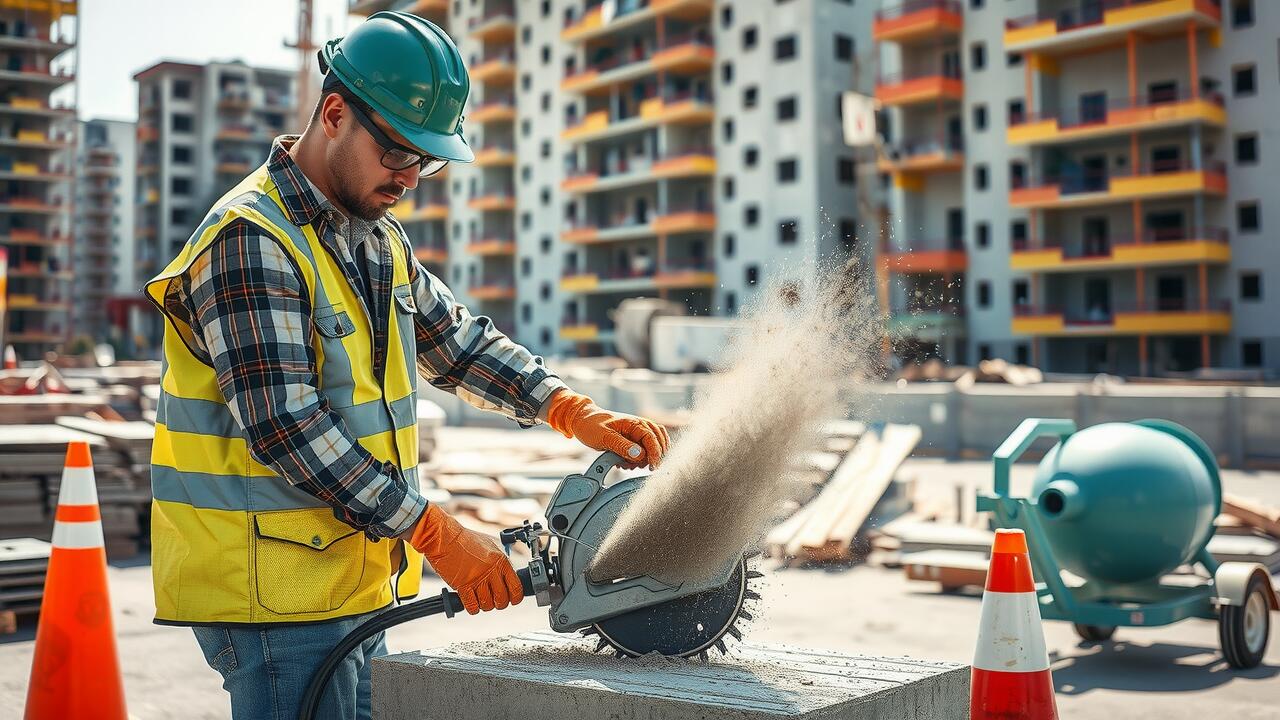
Table Of Contents
Proper Handling of Concrete Dust
Proper handling of concrete dust is a critical aspect of concrete cutting that can significantly impact both health and safety. The fine particles generated during cutting can pose respiratory hazards if inhaled. It is essential to use appropriate tools equipped with dust collection systems. These systems help minimize airborne dust and ensure a cleaner working environment. Personal protective equipment, such as dust masks or respirators, should be worn by all personnel in the vicinity of the cutting operation.
In addition to using dust collection systems, it is vital to maintain a proper site layout to limit the spread of dust. This includes planning cutting tasks in a manner that directs the dust away from workers and sensitive areas. Regular wetting of the cutting surface can also reduce dust generation, making the air quality safer for everyone on-site. Appropriate signage should be posted to alert workers about the potential for dust exposure, reinforcing the importance of following safety protocols during concrete cutting activities.
Best Practices for Dust Disposal
Effective disposal of concrete dust is essential to maintain a safe work environment during concrete cutting operations. Operators should utilize high-efficiency particulate air (HEPA) filters in vacuums and dust collection systems to capture fine particles. This technology ensures that dust does not become airborne, minimizing health risks to workers and surrounding communities. Additionally, implementing regular cleaning schedules can further control dust accumulation on job sites.
Disposing of collected dust must adhere to local regulations and best practices. Concrete dust often contains harmful substances, so it is crucial to review disposal guidelines to avoid environmental contamination. Contractors should consider using designated containers for construction waste and connect with licensed disposal facilities specializing in hazardous materials. Proper handling of dust disposal not only meets regulatory requirements but also promotes a safer work environment during concrete cutting tasks.
Training and Certification for Operators
Proper training and certification for operators involved in concrete cutting is essential to ensure safety on job sites. Operators should be well-versed in the equipment they are using, as well as the best practices for handling various cutting scenarios. These training programs should cover key topics, including hazard recognition, the use of personal protective equipment, and the techniques necessary for minimizing dust and debris. By investing in comprehensive training, companies can significantly reduce the likelihood of accidents and injuries.
In addition to safety awareness, certification adds a level of credibility and professionalism to operators’ skills. Many organizations provide specific certification programs that focus on concrete cutting and related activities. Having certified operators means that the workforce is knowledgeable about industry standards and regulations. This adherence to established guidelines not only enhances safety but also promotes a culture of responsibility and diligence in the workplace.
Importance of Proper Training Programs
Proper training programs are essential for any operation involving Concrete Cutting. These programs equip operators with the necessary skills to handle tools and machinery safely. Participants learn the technical aspects of equipment operation, including maintenance procedures. Understanding the nuances of concrete properties enhances their ability to make informed decisions on cutting techniques and methods.
Additionally, training emphasizes the importance of workplace safety protocols. Awareness of potential hazards related to Concrete Cutting minimizes injury risks for operators and nearby workers. Regularly updated training sessions can also address new technologies and best practices. This proactive approach fosters a culture of safety and responsibility in the workplace.
Emergency Procedures for Concrete Cutting
Emergency procedures for concrete cutting are essential to ensure the safety of all personnel on-site. In the event of an accident or equipment failure, workers should be familiar with the designated evacuation routes and the locations of first aid kits. Clear signage should be posted, and team members must know who to contact for immediate assistance. Regular drills can help reinforce these procedures, ensuring employees respond effectively during an emergency.
Preparation is key in a concrete cutting environment. Developing a safety response plan involves identifying potential hazards associated with the tasks at hand. This plan should outline specific roles for team members during emergencies, such as calling for help or administering first aid. Regular training on these procedures helps maintain a sense of readiness and competency, reducing risks during actual concrete cutting operations.
Developing a Safety Response Plan
A well-structured safety response plan is essential for ensuring the well-being of workers during concrete cutting operations. This plan should outline clear procedures for site emergencies, including injuries, equipment malfunctions, and hazardous material spills. Designating roles and responsibilities for emergency responders helps facilitate quick and efficient action when incidents arise. Regular drills should be conducted to familiarize the team with the plan and reinforce the importance of preparedness.
In addition to outlining emergency procedures, the safety response plan should include contact information for local emergency services and specify evacuation routes. Keeping first aid kits readily accessible and ensuring they are fully stocked can further enhance safety protocols. Evaluating the plan periodically is crucial to accommodate changes in personnel, equipment, or site conditions. Having a robust safety response framework will significantly reduce risks associated with concrete cutting tasks.
FAQS
What are the best practices for handling concrete dust during cutting?
Proper handling of concrete dust involves using water suppression methods, utilizing dust collection systems, and wearing appropriate personal protective equipment (PPE) such as masks and goggles to minimize inhalation and exposure.
How should concrete dust be disposed of safely?
Concrete dust should be disposed of according to local regulations, often by placing it in sealed containers and taking it to designated waste disposal sites. It’s important to follow best practices to prevent environmental contamination.
Why is training and certification important for concrete cutting operators?
Training and certification ensure that operators are knowledgeable about safety protocols, equipment usage, and emergency procedures, reducing the risk of accidents and ensuring compliance with regulatory standards.
What should be included in a safety response plan for concrete cutting?
A safety response plan should include emergency contact numbers, procedures for dealing with accidents or injuries, first aid protocols, and clear instructions on how to evacuate the area safely in case of an emergency.
How often should training programs be updated for concrete cutting operators?
Training programs should be updated regularly, ideally annually, or whenever there are changes in safety regulations, equipment, or procedures to ensure that operators remain informed about the latest safety practices.

